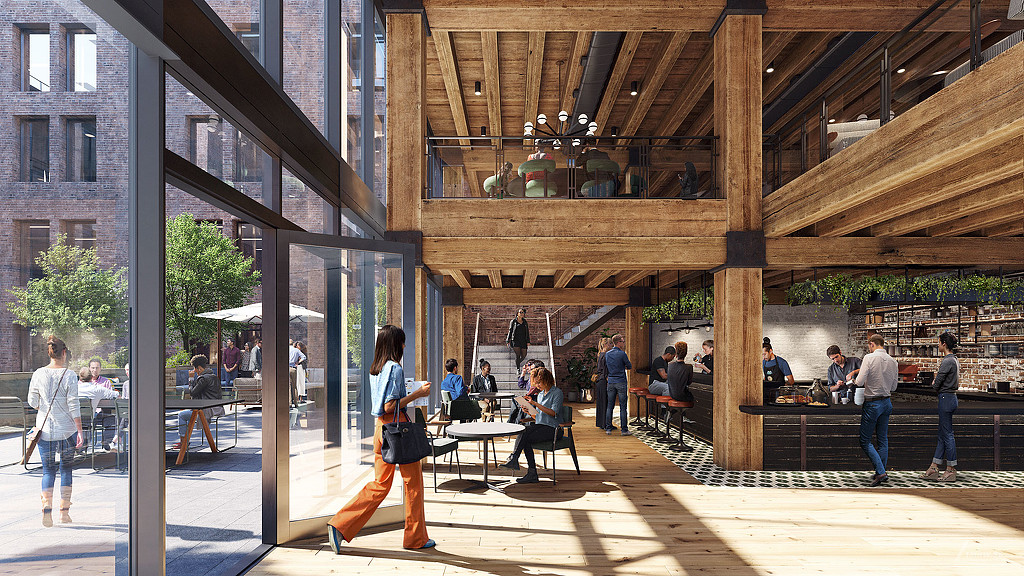Why Now Is the Time to Rethink Workplace Amenities
June 17, 2021 | By Evan Danchenka, Erin Saven
As global enterprises prepare their return to the office, they are reimagining their real estate footprints through the lens of performance benefits and asking what spaces provide the highest ROI. A fundamental part of that equation — and any return plan — is workplace amenities. Originally targeted tools to attract fresh talent in a booming economy, amenities are now the places where that very same talent must innovate for an unknown future.
As companies rethink their square-footage needs, they are faced with a new choice: do they relinquish their physical space and lean on remote working, or do they embrace the need for human, collaborative experience?
If amenities have become integral to a company’s way of working, then debating the right ratio of amenities-to-workstations is no longer relevant. So what amenities might deliver the greatest returns in today’s evolving work landscape? Many agree that collaborative environments, fluid locations, access to outdoors, proximity to food & beverage, and healthy enjoyable experiences will drive talent attraction, retention, and well-being.
If we still referred to these space types as “amenities,” then everything would be an amenity. Rather, these are the attributes that will drive the workplaces of the future.
The Evolving Role of Amenities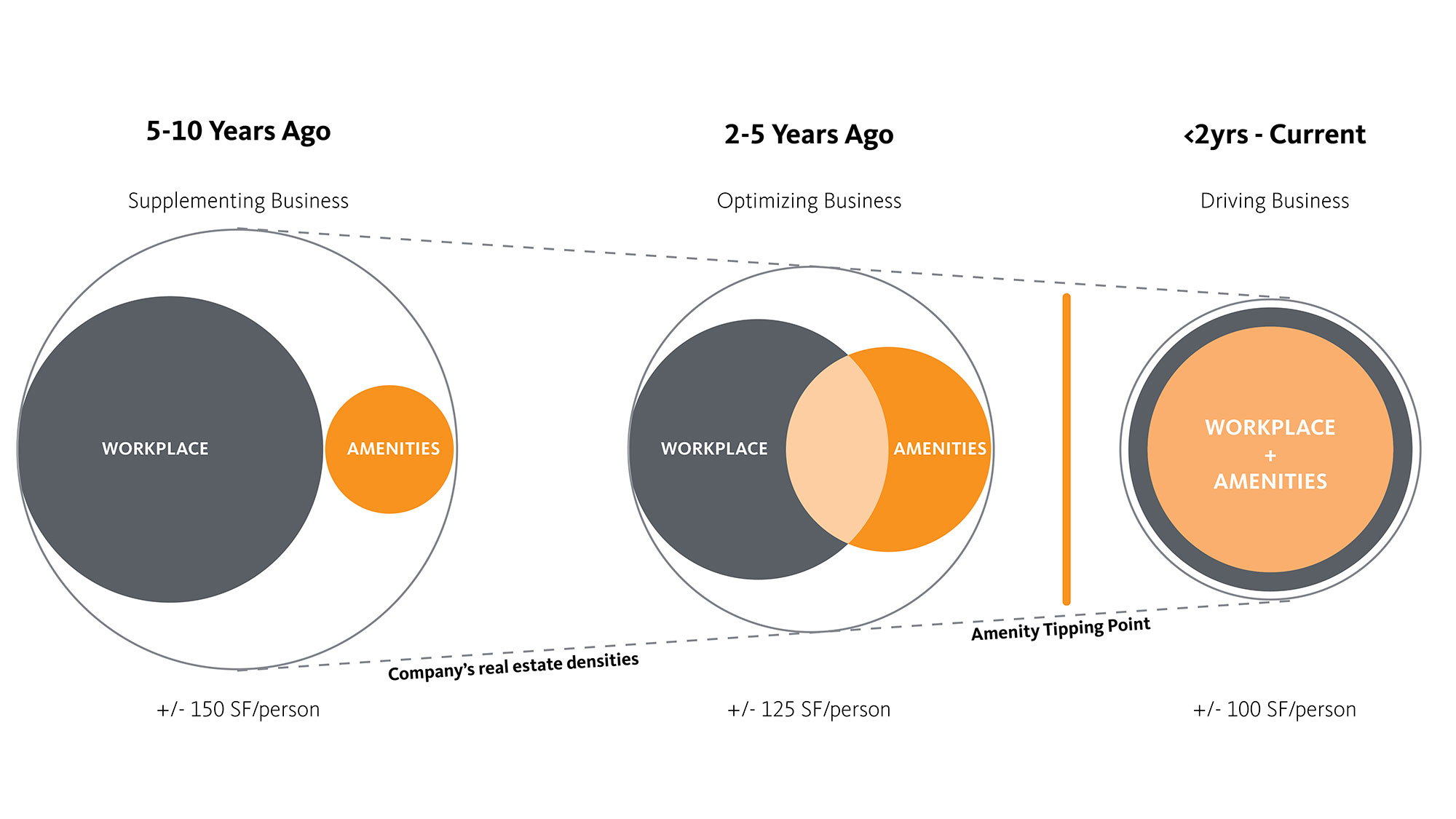
Here are three inspiring models for the workplace of the future that are pushing the concept of “amenities”:
The Flexible Model
Ford Book Depository, DetroitFord’s reimagined Book Depository building, which is part of its future mobility innovation district, is not your traditional office. It will become an industrial, community, and collaborative center, with multi-tenant maker spaces, labs, and mobility studios. The Book Depository is designed to meet the demands of today’s hybrid workforce. With built-in flexibility and choice as a cornerstone for the design, the lines between traditional desking and adjacencies are blurred. The entire space will be an adaptable kit-of-parts, where anything from furniture to fixtures can be flipped, moved, or reused, so that workers can fulfill many lifestyle needs — from wellness on the roof terrace, to bike storage and community engagements on the permeable ground floor.
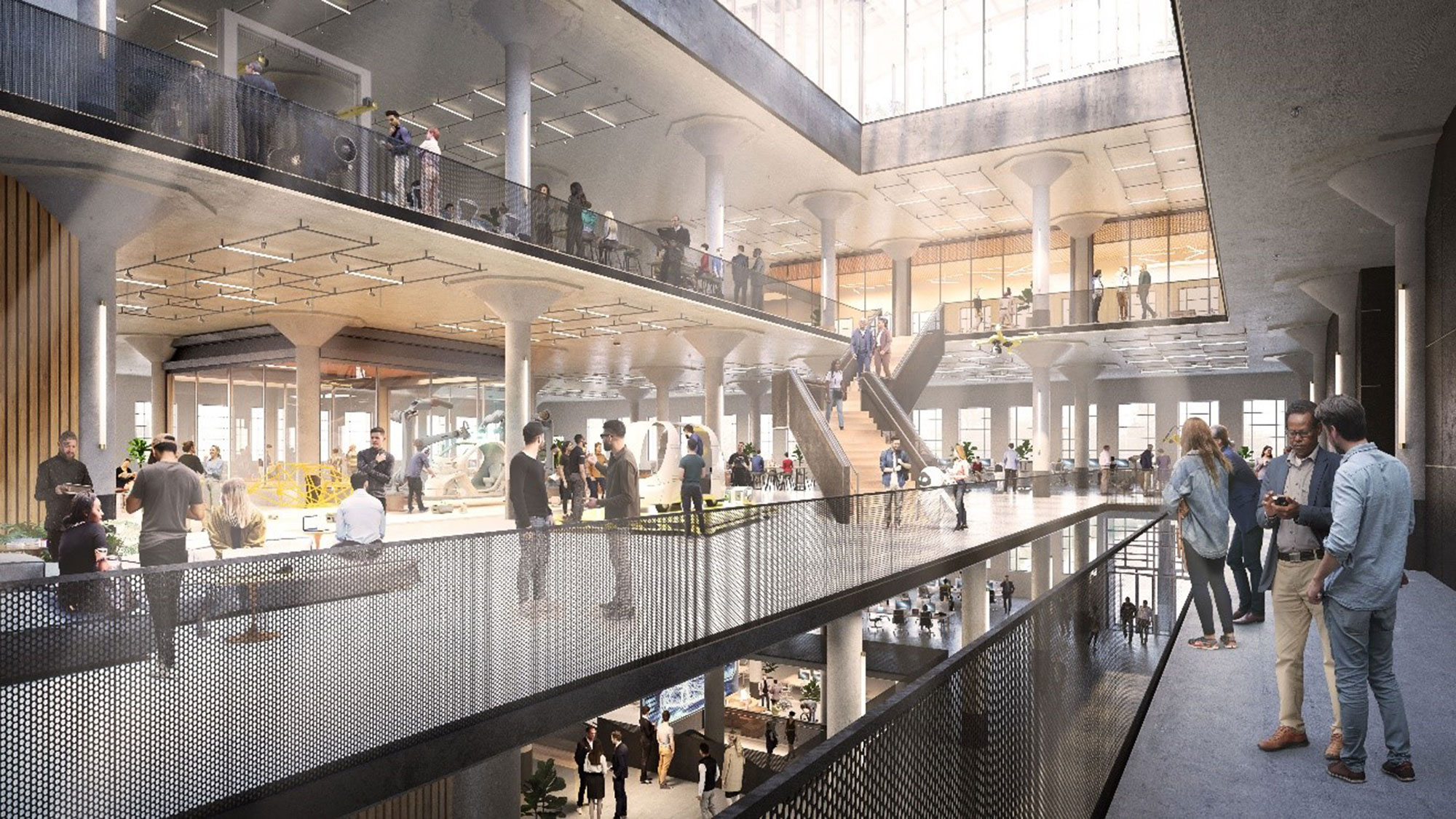
The Empowerment Model
Confidential Tech Company, Global LocationsFor this confidential global tech enterprise, the concept of the recalibrated workplace was grounded in the idea that all employees should have equal access to opportunity, and a strong sense of belonging — no matter where or how they choose to work. By providing more variety and choice in how their employees could engage with their environment, take meetings, exercise, and socialize, workers are empowered to take ownership of their lifestyle decisions. The result is an equitable experience that brings remote and on-site employees together through seamless collaboration. Physical and digital collide through next-generation conference rooms that are designed to enable simultaneous in-person and remote work, so that there is equal participation. This extends to physical fitness studios, which will broadcast live and pre-record online classes for employees to join in person, at home, or even on vacation.
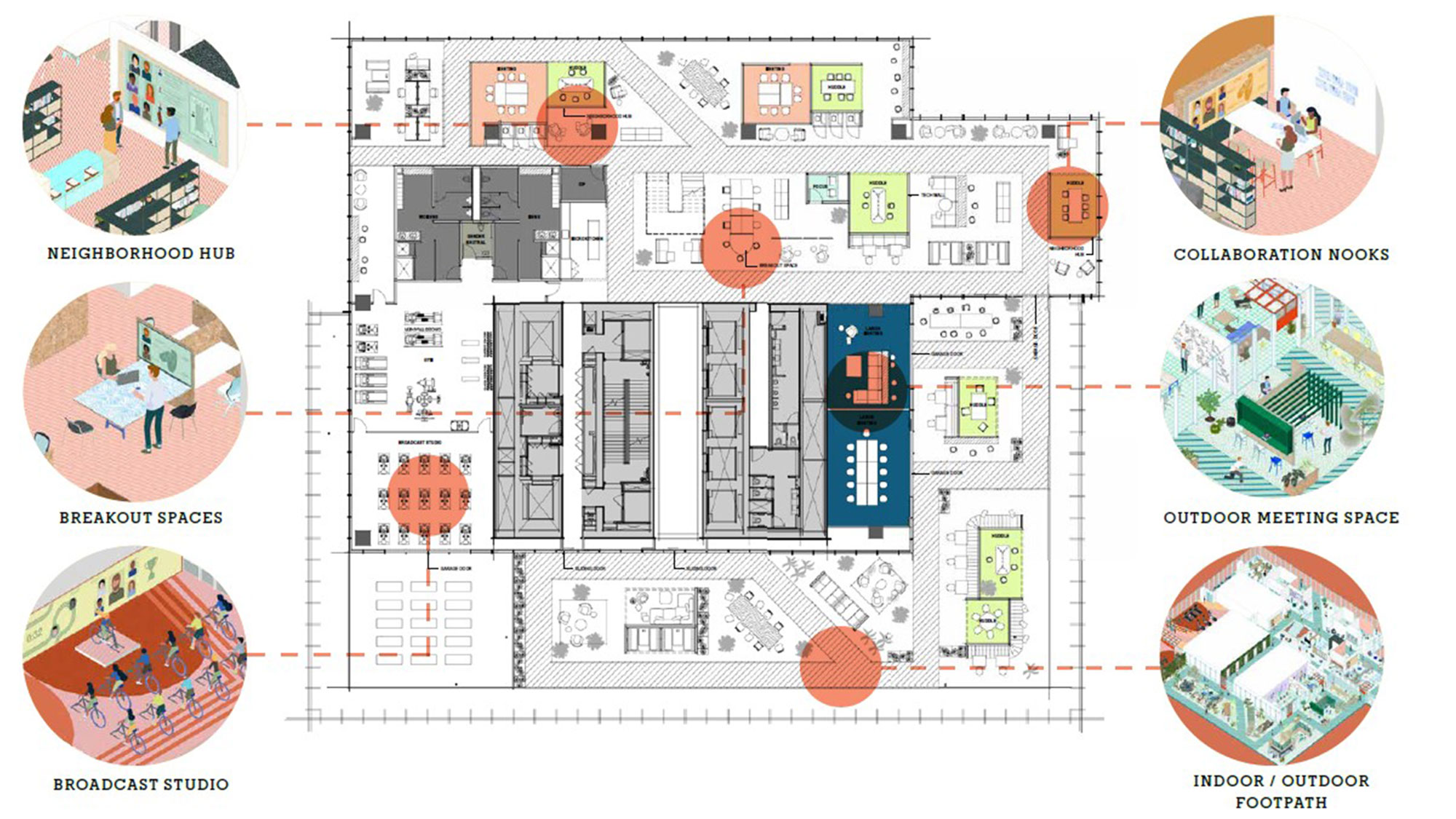
The Shared Model
135 West 50th Street, New YorkWhile some companies will want to own the full employee experience, others looking to streamline their real estate will be leaning on landlords to provide amenities that will build a larger lifestyle offering. At George Comfort & Sons’ 135 West 50th Street building in New York, tenants will have access to a newly renovated second-level floor via a double-height lobby complete with flexible meeting spaces accommodating more than 200 people, a social lounge with a bar, and a wellness area, all managed by Industrious. The most innovative feature is a recessed balcony that gives tenants outdoor space during fair-weather but is easily convertible to indoor space by sliding a floor-to-ceiling operable façade. The impact of the amenity floor, in conjunction with the signing of Urbanspace as an anchor retailer, reestablishes a through-block connection of 6 ½ Ave as a neighborhood draw. The repositioning and resulting amenity space has enabled the building to retain a major tenant and provide new tenants with an array of conveniences outside of their internal workplace.
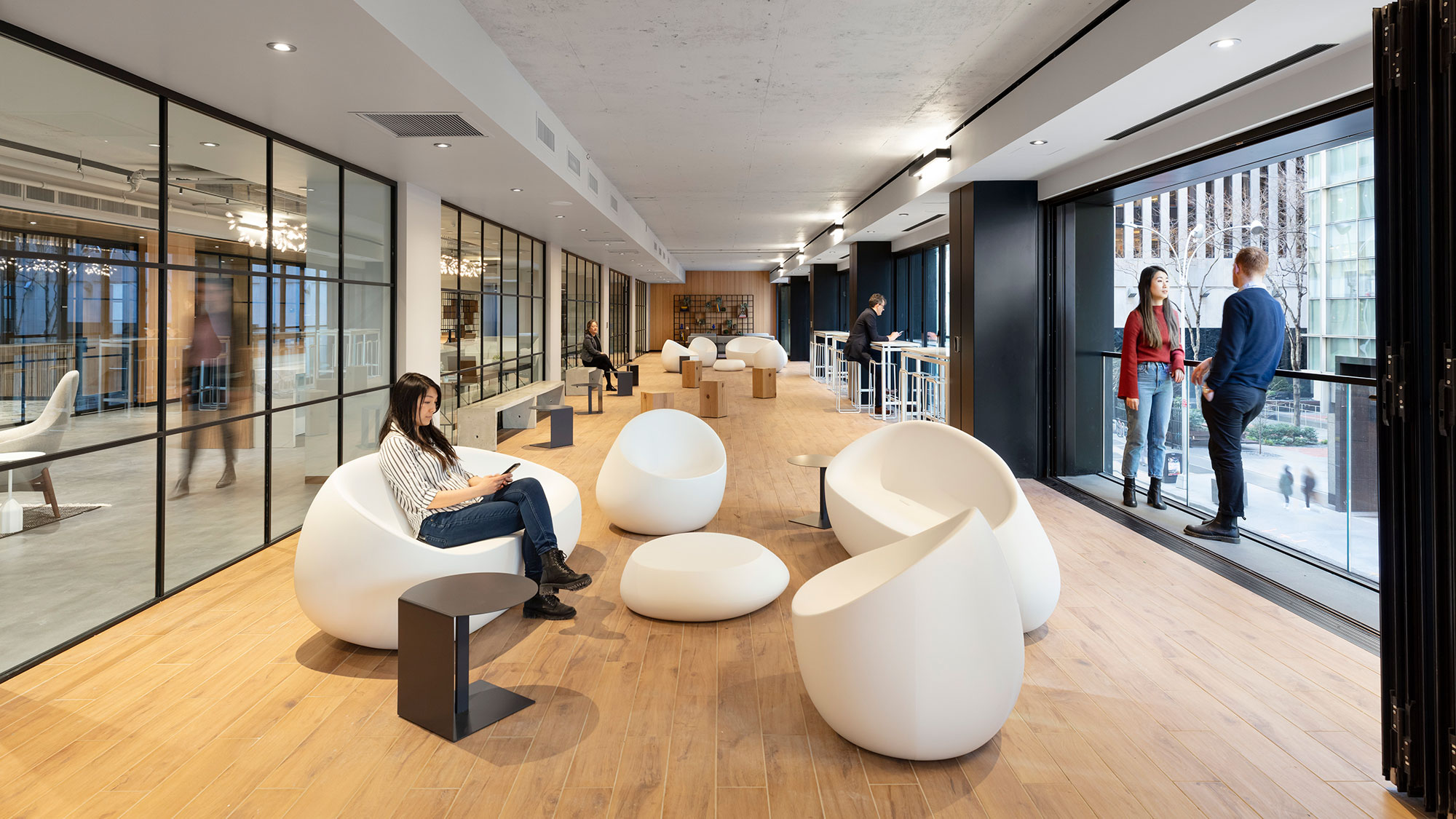
Although the post-COVID role of amenities remains untested, their purpose will remain the same — to bring people together to build culture, increase innovation, and spur new ideas. The companies that move beyond the practice of “amenitizing” and start revolutionizing their workplace will likely lead us toward the new best practices for planning and designing office environments.
For media inquiries, email .
